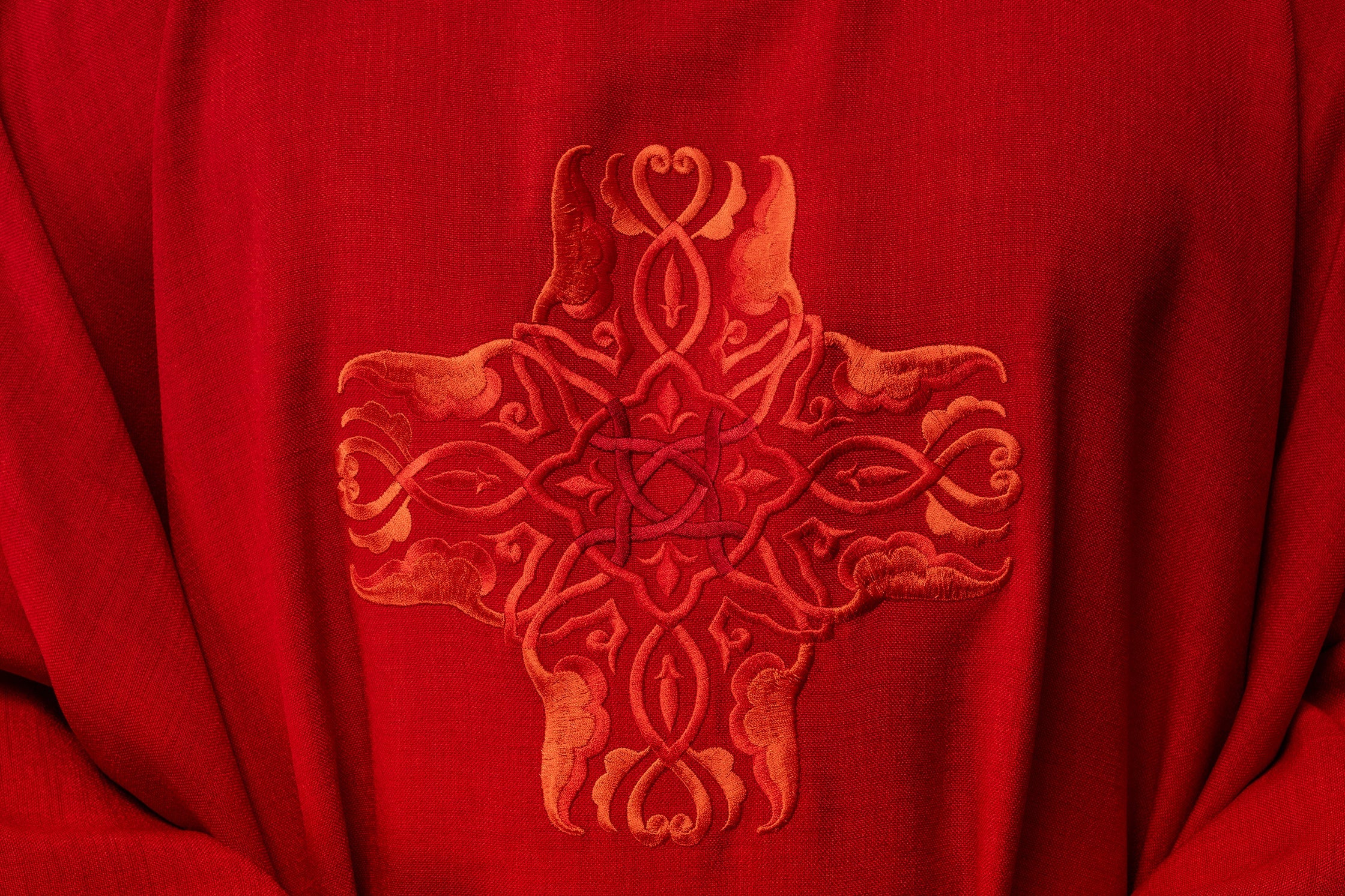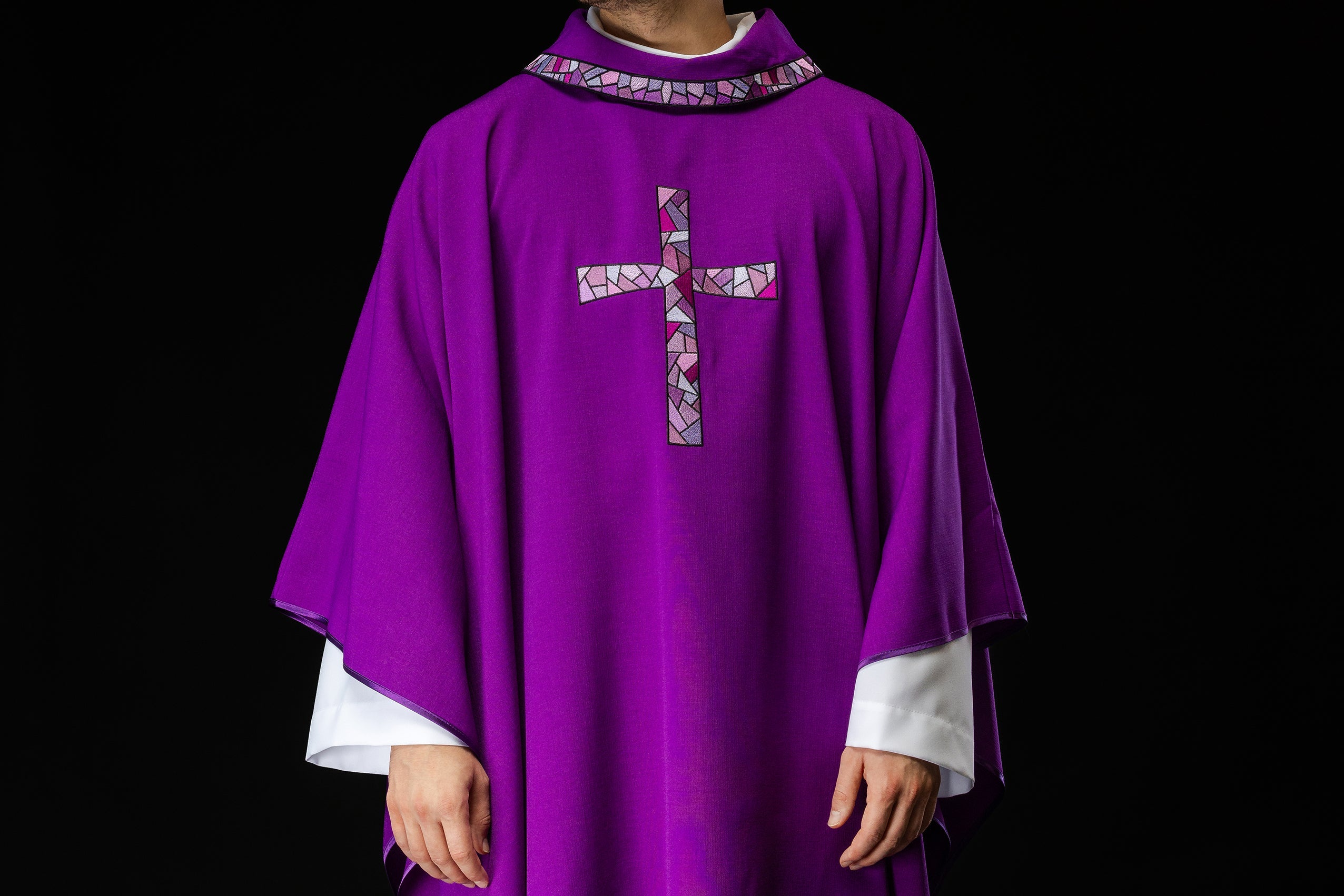
Common Mistakes When Choosing the Color of a Chasuble
Common Mistakes When Choosing the Color of a Chasuble
Choosing the right color for a chasuble is a key element of liturgical preparation, influencing the atmosphere and message of the Mass. Although liturgical regulations clearly define which colors are permissible during specific periods of the liturgical year and for particular occasions, mistakes do happen in practice. HAFTINA TEXTILE GROUP SP. Z O. O., as an experienced manufacturer of liturgical vestments, often encounters questions regarding this issue. Below, we present the most common mistakes made when choosing the color of a chasuble to help you make an informed and appropriate choice.
Why is the Color Scheme of Liturgical Vestments So Important?
The colors of liturgical vestments have deep symbolic meaning, referring to the mysteries of faith, periods of the liturgical year, and spiritual attitudes. The Church, through the unification of colors, seeks to emphasize the character of the celebration and evoke appropriate associations among the faithful. Each color carries a specific message:
- White/Gold: Symbolizes joy, light, purity, innocence, divine glory. Used during the Christmas Season, Easter Season, feasts of the Resurrection, Nativity, Marian solemnities, feasts in honor of saints (who are not martyrs), All Saints' Day.
- Red: Symbolizes the Passion of Christ, love, the fire of the Holy Spirit, the blood of martyrs. Used on Palm Sunday, Good Friday, the feast of Pentecost, feasts of apostles and evangelists, and holy martyrs.
- Green: Symbolizes hope, peace, spiritual growth, return to God. Used during Ordinary Time, when no particular feast falls.
- Purple/Violet: Symbolizes penance, conversion, expectation, time of reflection. Used during Advent and Lent.
- Pink/Rose: Symbolizes joy, hope, anticipation of approaching joy. Used on the third Sunday of Advent (Gaudete) and the fourth Sunday of Lent (Laetare).
- Black: Symbolizes mourning, penance, death. Used in liturgies for the dead (Requiem Mass) and on the anniversary of death. Sometimes replaced by purple.
Mistake 1: Color Inconsistency with the Liturgical Season
This is the most fundamental error. Using a color that does not correspond to the current liturgical season undermines the solemnity of the celebration and may mislead the faithful as to its character. For example, using a white chasuble during Lent is incorrect. It should be remembered that Masses in white or gold are not appropriate for periods of penance and mourning.
Mistake 2: Improper Use of White and Gold
White and gold are often confused or treated interchangeably without deeper consideration. Although gold can replace white in celebrations of the highest rank, its use should be reserved for particularly solemn celebrations. Sometimes it happens that richly decorated chasubles in ecru or cream are mistakenly identified as "gold," which is not entirely precise, although in some contexts they may play a similar aesthetic role and symbolize joy.
Mistake 3: Ignoring the Symbolism of the Color Red
The color red is very expressive and clearly associated with the Passion, the blood of martyrs, and the Holy Spirit. Its improper use, e.g., during celebrations in honor of saints who are not martyrs (unless it is a feast associated with the Holy Spirit or the apostles), may be considered an error. It should also be remembered that not every embroidered ornament in shades of red must be dedicated to a specific saint.





